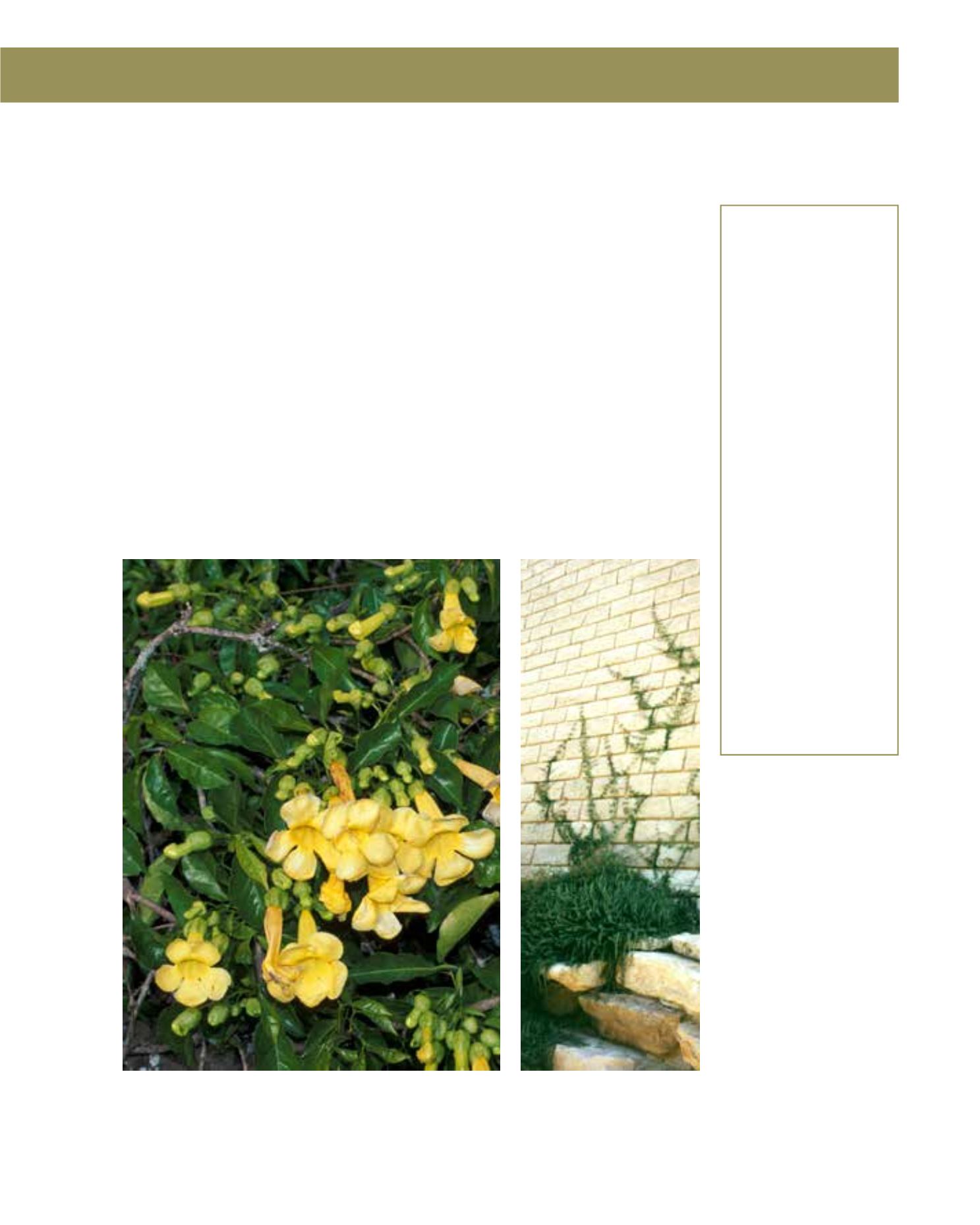

GENERAL
Origin
:
Mediterranean,
sub-tropical,
tropical
Vigour
:
fairly fast
growing
Humidity
:
semi-arid, semi-
humid
Propagation :
sowing and
pricking out,
cuttings
Maintenance :
high
CONDITIONS
Urban climate :
resistant
Dessication :
resistant
Stagnant water :
vulnerable
Irrigation
:
high
Salinity/ppm :
moderate (3000
ppm)
Hardiness
:
-9°C
SHAPE
Type
:
climbers
Height
:
4 m-10 m
Spread
:
6 m-12 m
Foliage
:
evergreen
FLOWER
Colour
:
bright yellow
Size
:
20 cm
Period
:
May - September
FRUIT
Type of fruit :
capsule
Fruit size
:
45 cm
This vigorous climber from tropical America can conquer large areas with its self-clinging slender
stems. The fast-growing Cat’s Claw can reach 8 metres in height. It is still traded frequently under
its outdated generic names Bignonia and Doxantha. Glossy, evergreen leaves are borne in pairs
and end in three-clawed tendrils that adhere to most surfaces except glass or metal. Bright-yellow
flowers appear from late spring to autumn. They are followed by brown, bean-like pods with
seeds that germinate easily. Transplanting should be done carefully without disturbing the sensi-
tive roots and the upright, spherical tuber. It is recommended that the stems be cut to the ground
after planting, since only new growth attaches itself to supports. This radical treatment allows
it to cling faster. Once established, this climber tolerates full sun, but partial shade and some
drought are also tolerated, while still resulting in a lush appearance. It resists heat and frost up to
–9°C. It tolerates a wide range of soils, but revels in nutritious ground with a high humus content
and frequent irrigation. Maintaining this plant can cause skin irritation. Owing to its rampant
growth, the Cat’s Claw needs some containment if planted next to buildings. Pruning may be ne-
cessary to keep the climber from getting too heavy. It is better located near walls or escarpments
which can be overgrown. Stems without support hang down forming a curtain of filigree leaves.
It is occasionally seen in Saudi Arabia, clinging even to high building facades.
196
Macfadyena unguis-cati,
Bignoniaceae
Cat‘s Claw Vine
















